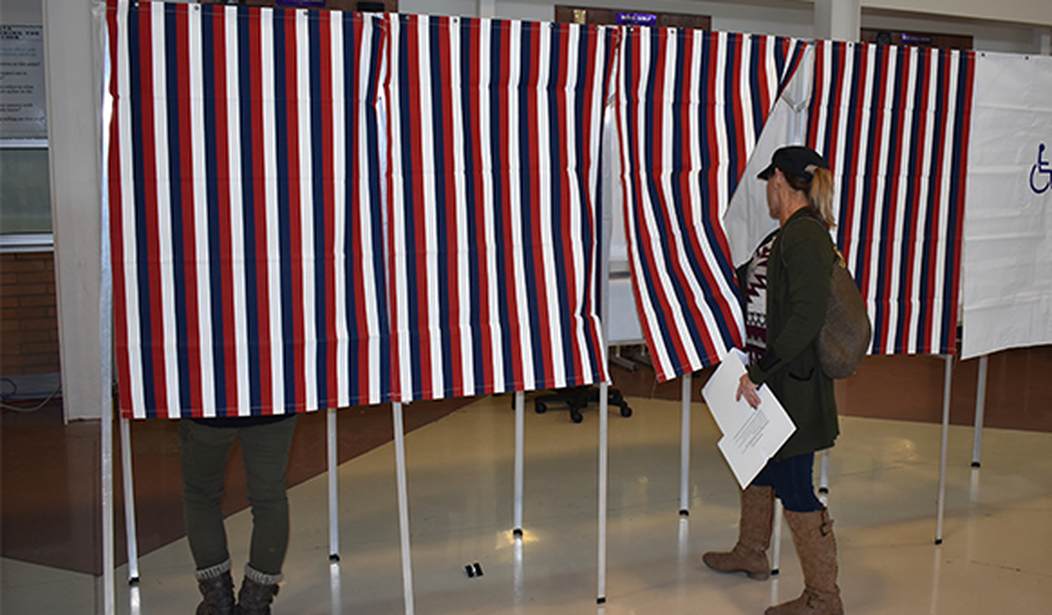In November 2010, Barack Obama was celebrating the passage of the health insurance law that infamously bears his name. He was also trying to hide the weakest recovery from a recession in modern U.S. history and was dealing with eye-popping $2 trillion deficits.
All of that added up to a net gain for Republicans of 63 seats in the House and seven seats in the Senate. It was the largest House wipeout for either party since 1948 and has permanently altered the balance of power in the House.
Fast forward to 2022, and, in some respects, the battlefield is even more favorable for Republicans. The pandemic recession has American voters in an angry and sullen mood. And they don’t have to look far for the cause of their rage.
Democrats in Congress — doing the bidding of Joe Biden — have made one incredible error after another. Some mistakes have been errors in judgment, like passing $5.3 trillion in new spending — much of it unnecessary.
But some errors have been cynical attempts to play politics with the pandemic. As we’re finding out now, keeping the schools closed, largely at the behest of teacher’s unions, has had a catastrophic effect on American education from which the United States will not soon recover.
The American voter — despite what the left thinks — is not stupid. People have always known when politicians are trying to put lipstick on a pig and attempt to sell them a crappy bill of goods. Voters know from their own pocketbooks whether they’re better off or not and, more importantly, what the future looks like from their view.
Forget individual polls. Looking at voter surveys in the aggregate tells us a lot more about the potential gains or losses for the parties in the midterms. And taken together, the trendline for Republicans — which was going up gradually until about 2 weeks ago — is now arcing upwards quite steeply.
In desperation, Democrats have been playing the abortion card for all its worth. And they are beating the “orange man bad” drum as loud and often as they can.
Senior Democrats tend to forget that most Americans don’t hate Trump or love abortion as much as they do. Voters care more about the cost of living and crime. Under Biden, inner-city violence has rocketed. So have food and gas prices. The Inflation Reduction Act may turn out to be one of the worst-named pieces of legislation in recent history. It did little or nothing to reduce prices and in fact introduced yet another vast bout of inflationary government spending in the short-term, while promising higher tax revenues (the hard part) down the line. Bidenomics is no saner than Trussonomics, when you think about it, although the American economy is of course much more powerful than Britain’s. Biden seems to have taken a gamble that inflation will come down to a non-frightening level in time for the midterms. That hasn’t paid off.
Inflation, gas, and food prices, crime — these all contribute to the voter’s “pucker factor.” Political pros know fear drives voters to the polls far more than hope does. And if the voters go to vote in a fearful state of mind, that doesn’t bode well for the party in power.
So does this look like another year like 2010 with a Democratic Party wipeout? Probably not.
Since the census of 2000, political parties have spent hundreds of millions of dollars on slicing and dicing congressional districts. It’s become an art form to draw lines that are partisan enough to give the party in power in that particular state an advantage without making it so patently unfair that it loses a court case.
Democrats in New York tried to get away with a truly remarkable gerrymander, drawing lines that would have created 23 Democratic districts of out 26 total seats in the state. But the nonpartisan adjudicator set up to make sure this kind of funny business didn’t stand ruled the map invalid. The new map should give Republicans a better shot in several districts.
But this kind of gerrymander is dying off. And it’s because the last two census counts have allowed the parties to create ever-less competitive districts.
One of the most consequential outcomes of this redistricting cycle has been the continuing decrease in the number of competitive congressional districts. Under new maps, there are just 30 districts that Joe Biden won by less than eight percentage points in 2020 and, likewise, just 30 districts that Donald Trump won by less than eight points.
All told, there are now fewer competitive districts than at any point in the last 52 years. If the good news is that both parties emerged with reasonable opportunities in coming years to win control of a closely divided House, the bad news is that they will fight that battle on the narrowest of terrains under maps artificially engineered to reduce competition.
Fewer chances to flip a seat means that fewer seats will flip. The exception will be when the partisan divide is larger than eight points and seats still flip. In 2010, eight seats that the incumbent Democrats won in 2008 by 10 points or more flipped to the GOP.
Few prognosticators expect that kind of tidal shift in 2022. But there will no doubt be surprises the morning after election day.










